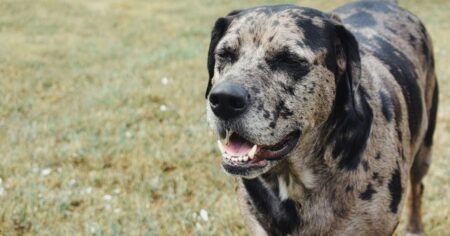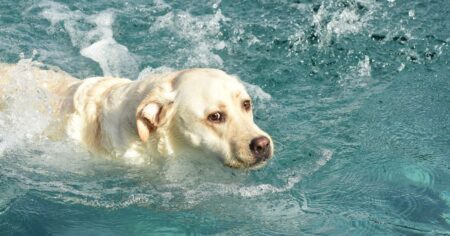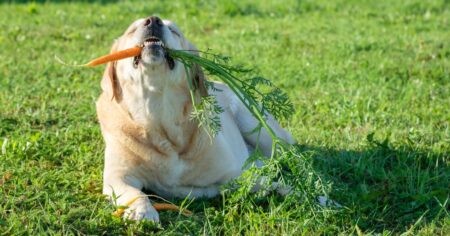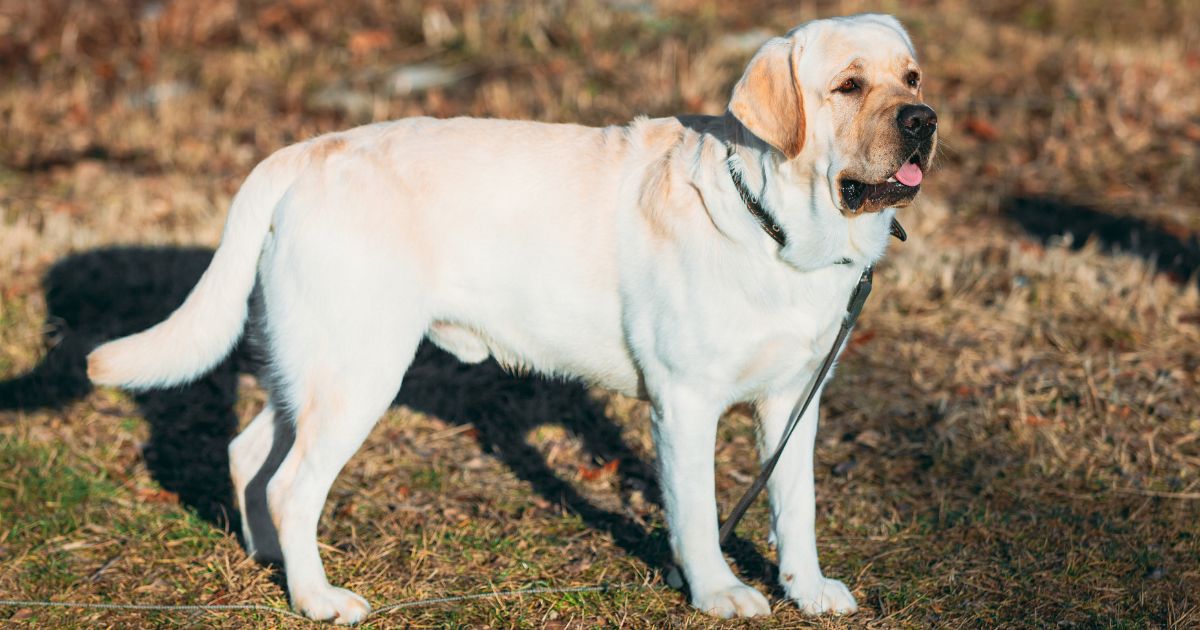
English Labradors, also known as English Labrador Retrievers, are a beloved dog breed that originated in the United Kingdom. They are a medium to large sporting dog breed that are known for their friendly and loyal temperament, making them a popular choice for families and individuals alike.
While there is technically no difference between English Labs and American Labs, there are some subtle differences in appearance and temperament that some breeders and enthusiasts believe set them apart. English Labs are said to have a broader, more blocky head and a thicker coat than their American counterparts, and they are often bred for show rather than hunting. However, many English Labs still possess the strong retrieving instincts that the breed is known for, and they can make excellent hunting companions as well as family pets.
Whether you are considering adding an English Lab to your family or simply want to learn more about this wonderful breed, there is no denying that they are an incredibly special and unique type of dog. With their affectionate personalities, boundless energy, and unwavering loyalty, English Labs have captured the hearts of countless dog lovers around the world, and it is easy to see why.
The Appeal of the English Labrador
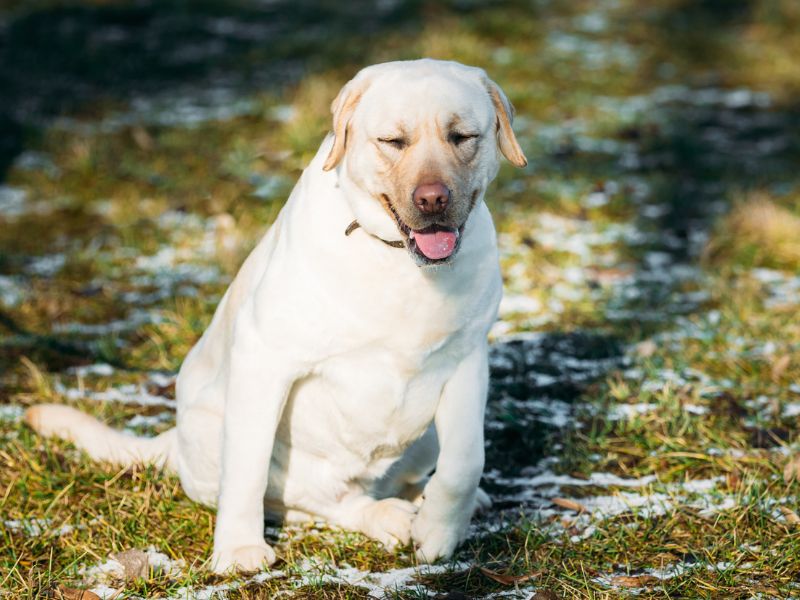
The English Labrador Retriever, with its classic and handsome features, is a popular breed of dog. One of the reasons for its appeal is its friendly and loyal personality. English Labs are known for their gentle nature and their love for people. They are great with children and make excellent family pets.
Another reason for the breed’s popularity is its trainability. English Labs are intelligent dogs that are eager to please their owners. This makes them easy to train and they excel in obedience and agility competitions. They also make great hunting dogs due to their strong retrieving instincts.
English Labs are also known for their good looks. They have a stocky build, with a broad head and a thick tail. They come in three colors: black, yellow, and chocolate. The breed standard for the English Lab is slightly different from the American Lab, with the English Lab being shorter and stockier than its American counterpart.
Overall, the English Labrador Retriever is a popular breed of dog due to its friendly nature, trainability, and good looks. It is a great choice for families with children or for those who enjoy outdoor activities such as hunting or agility competitions.
English Vs American Labs
English Labs and American Labs are both members of the Labrador Retriever breed, but they have some differences in appearance and temperament.
English Labs are known for being stockier with a larger build. They have thick, short legs to carry their giant bodies, a very large barrel chest that hangs low on their body, and a thick neck. In contrast, American Labs are more slender with a finer coat and a taller, more athletic build.
English Labs tend to have a calmer temperament, while American Labs are known for their high energy levels. This makes American Labs the favorite for field trials and other activities that require a lot of physical activity.
| English Lab | American Lab |
|---|---|
| Stockier build | Slender build |
| Calmer temperament | Higher energy levels |
| Thick, short legs | Taller, athletic build |
Despite these differences, both English and American Labs are great family pets. They are friendly, loyal, and intelligent dogs that are easy to train and love to play. When choosing between an English and American Lab, it’s important to consider your lifestyle and preferences to find the best fit for your family.
Why Did Labradors Split into English and American Labs
Labrador Retrievers are one of the most popular dog breeds in the world, and they are known for their friendly and loyal nature. However, the breed has not always been divided into English and American Labs. Until the 1940s, the Labrador breed was essentially one strain, and one type.
As the breed became more widespread, decades of specialized breeding split Labradors into their British and American subtypes. This split in the breed has happened in many countries, not just in the US.
The split between the English and American Labs came later, when the Labrador grew in popularity as a pet during the twentieth century. And as we have seen, it is a division based not on geography, but on role. Until the 1940s, the breed was essentially one strain, and one type. However, over time, breeders began to focus on different traits and characteristics, leading to the creation of two distinct types of Labrador Retrievers.
Why Are They Called English Labs?
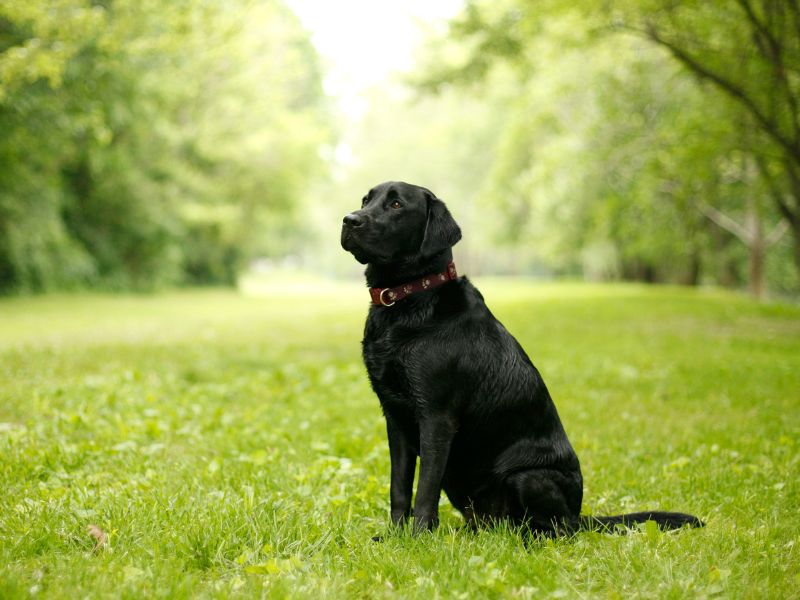
English Labs are called so because they were originally bred in England. They are also known as Show or Bench Labradors in England. These dogs were bred to conform to a certain standard and to participate in dog shows. They are typically shorter and stockier than their American counterparts, which are called working or field-bred Labradors in Britain.
The English Lab is the same breed as the American Lab, but with slight differences in appearance and temperament. According to The Spruce Pets, the English Lab has a broader head, shorter legs, and a stockier build than the American Lab. They also have a calmer and more laid-back temperament than their American counterparts, which are bred for hunting and field work.
English Labs have become popular in the United States as well, due to their friendly and gentle nature. They make great family pets and are good with children. According to Petmoo, English Labs are also used as show dogs and as companions for hunting in the UK.
Where Did English Labs Come From?
The Labrador breed was established in Newfoundland by pioneering English settlers who brought their hunting and fishing companions with them from England. The breed was initially used for retrieving fish and game for fishermen and hunters. The ancestors of English Labs came from Newfoundland, Canada, not Labrador as the name suggests. In the early 1800s, there was a breed in this area known as the St. John’s water dog, also called the lesser Newfoundland, which worked on fishing boats.
The St. John’s water dog was bred with other breeds, including the Newfoundland, to create the Labrador Retriever as we know it today. The breed was then brought to England in the 1800s, where it was further developed and refined. The English Lab is simply the American name for the chunkier type of Lab favored in the show ring. Those Labs originally bred especially for hunting are called American Labradors. They are still the same breed, but vary quite a bit in weight and body shape. Their temperaments are also a little different.
English Labs are known for their friendly and outgoing personalities, as well as their loyalty and intelligence. They are a popular breed for families and make excellent therapy dogs. They are also used as service dogs for people with disabilities and as search and rescue dogs.
English Labrador Retriever Appearance
The English Labrador Retriever is a medium-large sporting dog breed from the United Kingdom. They are known for their friendly and outgoing personality, as well as their distinctive appearance. In this section, we will discuss the various physical characteristics that make the English Lab unique.
English Lab Head
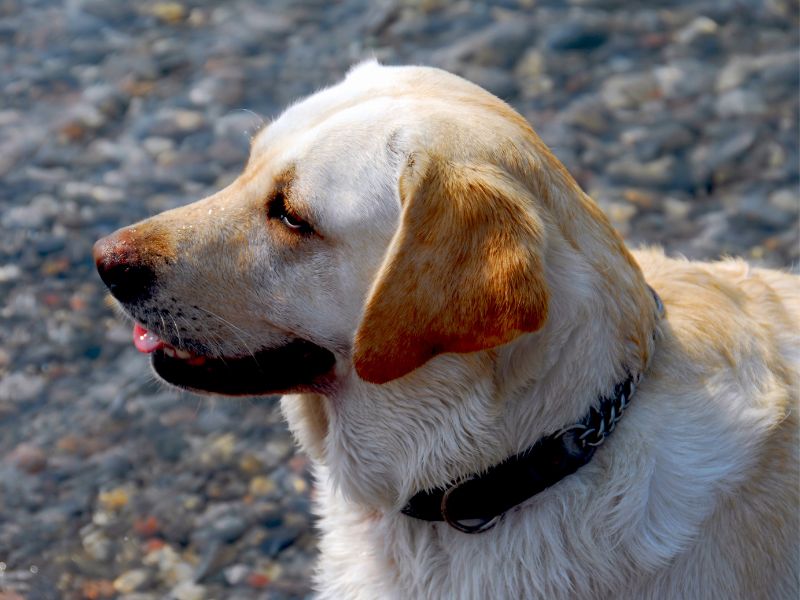
One of the most recognizable features of the English Lab is its head. They have a broad skull, with a well-defined stop and a powerful jaw. Their eyes are medium-sized and set well apart, with a friendly expression. English Labs have medium-sized ears that hang close to their head.
English Lab Body Shape
The English Lab has a sturdy, athletic build. They have a deep chest and a broad, muscular back. Their legs are strong and straight, with round, compact feet. English Labs have a distinctive “otter” tail, which is thick at the base and tapers to a point at the end.
Are English Labs Shorter?
Contrary to popular belief, English Labs are not shorter than American Labs. Both breeds are technically the same breed, but the English Lab is bred for show while the American Lab is bred for work. The English Lab tends to have a more stocky build, while the American Lab is leaner.
English Lab Otter Tail
The English Lab’s otter tail is one of its most distinctive features. It is thick at the base and tapers to a point at the end. The tail is used for balance and as a rudder when swimming. English Labs are excellent swimmers and love to retrieve objects from the water.
English Labrador Coat
The English Lab has a short, dense, water-repellent double coat that comes in black, yellow, or chocolate. Their coat is easy to maintain and requires minimal grooming. English Labs shed moderately throughout the year, with heavier shedding during the spring and fall.
English Lab Weight
The English Lab is a medium-large breed, with males standing 22.5 to 24.5 inches in height and weighing between 70 and 80 pounds. Females stand 21.5 to 23.5 inches in height and weigh between 55 and 70 pounds. It is important to monitor your English Lab’s weight and feed them a balanced diet to prevent obesity.
Get Pippa’s Training Tips!
If you’re looking for expert advice on training your English Lab, look no further than Pippa Mattinson’s training tips. With over 30 years of experience breeding, training, and working with Labrador Retrievers, Pippa has a wealth of knowledge to share.
Her training guides take you step-by-step through the training process, breaking it down into achievable stages. From puppy potty training to advanced obedience, there is something here for everyone. And the best part? These tips are completely free!
Some of Pippa’s top training tips include:
- Using positive reinforcement to encourage good behavior
- Breaking training sessions into short, focused sessions
- Being consistent with commands and rewards
- Practicing in a variety of environments to build your dog’s confidence
By following Pippa’s advice, you can help your English Lab become a well-behaved, obedient companion. Sign up for her training tips today and start building a strong bond with your furry friend!
English Lab Temperament
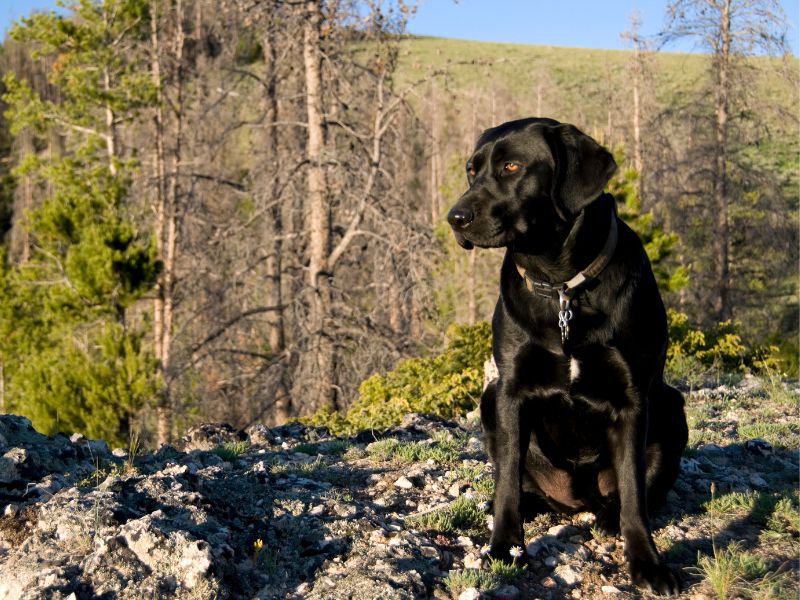
The English Labrador Retriever is known for its friendly and upbeat temperament. They are kind-natured dogs that love to please their owners. These dogs are highly social and get along well with everyone, including other dogs and strangers, when they have proper training and socialization.
English Labs are generally calmer and more suited for being a semi-active family pet. They have slightly lower energy levels than field type Labs, making them great companions for families with children or seniors. However, they still require regular exercise and mental stimulation to stay happy and healthy.
These dogs are highly intelligent and eager to learn, which makes them easy to train. They respond well to positive reinforcement and enjoy being rewarded for good behavior. English Labs are also great with children, making them an excellent choice for families with young kids.
Overall, the English Labrador Retriever is a friendly, kind, and loyal companion that makes an excellent family pet. They are highly adaptable and thrive in various living situations, including apartments and houses with yards. With proper training and socialization, these dogs make great additions to any family.
Comparing English Lab with American Lab Puppies
English Labradors and American Labradors are both popular breeds of Labrador retrievers. While they share many similarities, there are also some key differences between the two. One of the most noticeable differences between the two breeds is the appearance of their puppies.
English Lab puppies tend to have a stockier build with shorter legs and a larger, blockier head. American Lab puppies, on the other hand, are often taller and more athletic-looking with a slimmer build and finer bone structure.
Another difference between the two breeds is their temperament. English Labs are known for being calmer and more laid-back, while American Labs are often more energetic and active. This can be an important consideration for families looking for a pet that fits their lifestyle.
When it comes to training, both English and American Labs are highly intelligent and eager to please. However, English Labs may be more stubborn and independent-minded, while American Labs may be more eager to please and responsive to training.
Ultimately, the choice between an English Lab and an American Lab will depend on a variety of factors, including the owner’s lifestyle, preferences, and needs. Both breeds can make wonderful pets and loyal companions, and with proper care and training, they can thrive in a variety of environments.
English Labradors: All Grown Up
English Labradors are known for their friendly nature and good looks. As they grow up, they become even more charming and affectionate. They are loyal and devoted to their families, making them an ideal pet for households with children or other pets.
When fully grown, English Labradors are medium to large-sized dogs. Males typically weigh between 65 and 80 pounds, while females weigh between 55 and 70 pounds. They stand between 21 and 24 inches tall at the shoulder. This size makes them perfect for families who want a dog that can keep up with their active lifestyle.
One of the most striking features of the English Labrador is their coat. They have a short, dense, water-repellent double coat that comes in black, yellow, or chocolate. The coat is easy to maintain and only requires regular brushing to keep it looking healthy and shiny.
English Labradors are also known for their intelligence and trainability. They are quick learners and respond well to positive reinforcement training methods. This makes them an excellent choice for families who want a dog that can be trained to do tricks or perform tasks around the house.
In summary, English Labradors are a great choice for families who want a loyal, friendly, and intelligent pet that is easy to maintain. They are medium to large-sized dogs that are perfect for active households. Their charming personality and good looks make them a popular breed around the world.
English Lab Colors
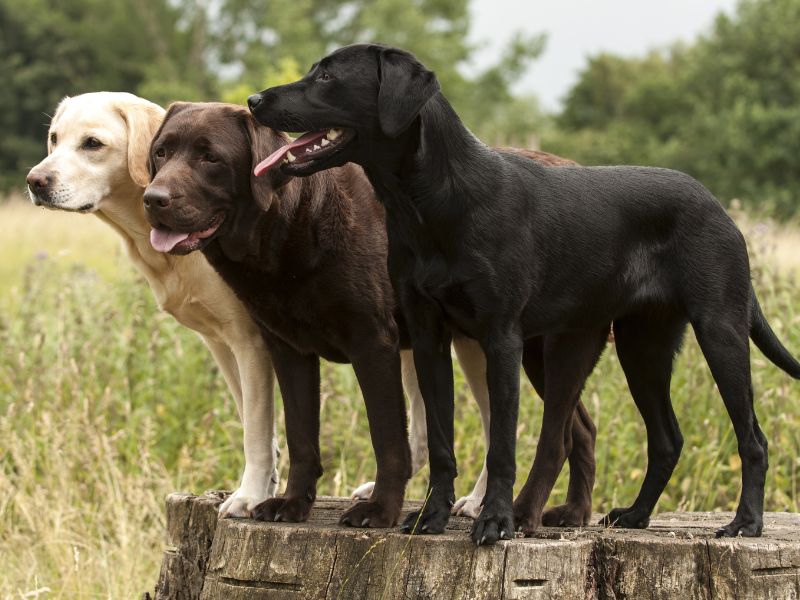
English Labs come in a variety of colors, with the most common being black, yellow, and chocolate. The coat color of an English Lab is determined by two different genes. The first gene controls the color of the coat, and is either B=Black or b=brown. Each parent provides the offspring with either a “B” gene or a “b” gene. Black is dominant over brown, which means that if a Lab inherits a “B” gene from one parent and a “b” gene from the other, it will have a black coat.
Yellow Labs can range from a creamy white, through pale buttermilk yellow, to gold and even the most intense fox red. For many years, the paler dogs were the most sought after.
Chocolate Labs can vary in shade from light brown to dark brown. Some breeders may also advertise “silver” Labs, but it is important to note that silver is not a recognized color in the breed standard.
Silver English Labs
Some breeders may advertise “silver” English Labs, which are said to have a grayish-silver coat. However, it is important to note that silver is not a recognized color in the breed standard. The American Kennel Club (AKC) only recognizes three colors for Labrador Retrievers: black, yellow, and chocolate. The United Kennel Club (UKC) does not recognize silver as a color for Labradors either.
The “silver” color is actually a dilution of the chocolate color. It is caused by a mutation in the gene that controls the color of the coat. This mutation causes the coat to appear grayish-silver instead of the typical chocolate brown. However, this color is not recognized by the AKC or UKC, and breeding for this color is discouraged by many breed clubs and organizations.
Grooming English Labs
English Labs have a short, dense coat that requires minimal grooming. However, regular grooming is still necessary to keep their coat healthy and shiny.
English Labs require a bath every 2-3 months or as needed. Use warm water and a high-quality dog shampoo and conditioner to avoid drying out their skin. It is important to thoroughly rinse out all shampoo and conditioner to prevent skin irritation.
English Labs require regular brushing twice or thrice a week. This helps to remove loose hair and distribute natural oils throughout their coat, which helps to keep their coat healthy and shiny. Use a wide-tooth metal comb to remove any tangles or mats.
English Labs should have their nails trimmed every 4-6 weeks. Long nails can cause discomfort and even lead to joint problems. It is important to use proper nail clippers and to avoid cutting the quick, which can cause bleeding and pain.
English Labs require ear cleaning on a weekly basis. Ears should be examined and thoroughly cleaned using a gentle ear cleaner and cotton balls. This helps to prevent ear infections and other ear-related problems.
Regular grooming not only helps to keep English Labs looking their best, but it also helps to maintain their overall health and well-being.
Is There a Different Breed Standard for English Labs?
When it comes to breed standards, there is only one Labrador Retriever. This means that all Labrador Retrievers should meet the breed standard, or at least come pretty close to it. However, there are some slight differences between English and American Labs in terms of appearance and temperament.
English Labs tend to be slightly stockier and just a bit calmer than their American counterparts. They may have a broader head and shorter legs, giving them a more compact appearance. American Labs, on the other hand, are often taller and more athletic-looking.
Despite these differences, both English and American Labs should still meet the same breed standard. This includes having a friendly and kind-natured temperament, as well as being intelligent, trainable, and eager to please.
When it comes to training, English Labs may be slightly easier to work with due to their calmer demeanor. However, both types of Labs can excel in obedience, agility, and other canine sports with the right training and socialization.
English Lab Health
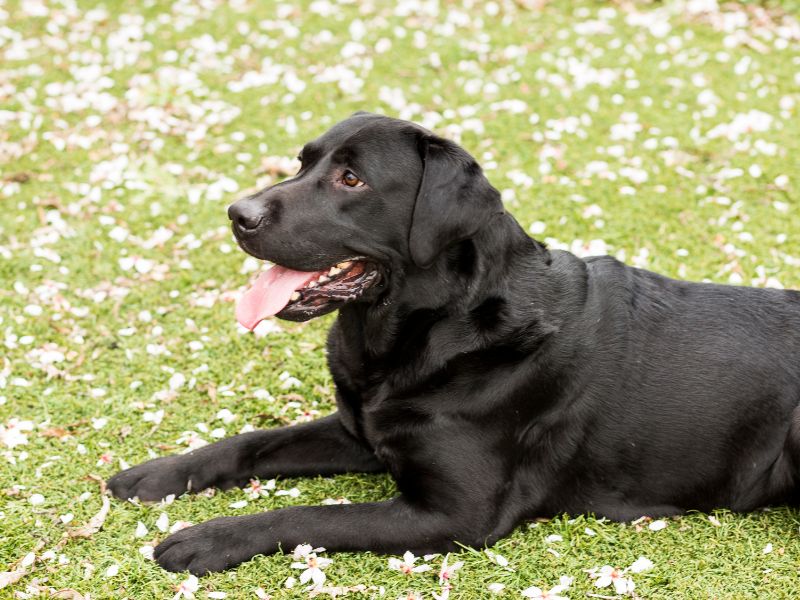
Like all dog breeds, English Labs are prone to certain health issues. However, many of these can be avoided by choosing puppies from health tested parents. Some of the most common health problems that English Labs face include:
- Joint problems such as hip or elbow dysplasia which affect the hip or elbow joints, prohibiting normal movement and causing pain and immobility
- Obesity which can lead to a range of health problems including diabetes, heart disease, and joint problems
- Allergies which can cause skin irritation, itching, and discomfort
- Epilepsy which can cause seizures and can be managed with medication
It is important to note that while these health issues are common in English Labs, they are not inevitable. By taking proper care of your dog, you can help to prevent many of these problems from occurring.
One of the most important things you can do to keep your English Lab healthy is to provide them with a balanced and nutritious diet. This should include high-quality protein, healthy fats, and plenty of fruits and vegetables. You should also make sure that your dog gets plenty of exercise to help them maintain a healthy weight and prevent joint problems.
Regular visits to the vet are also important to ensure that your English Lab stays healthy. Your vet can perform regular check-ups and screenings to catch any potential health problems early on, when they are easier to treat.
Obesity in English Labradors – How Chubby Can You Go?
Like all dogs, English Labradors can gain weight if they eat too much and don’t get enough exercise. However, Labradors are particularly prone to obesity due to their love of food and their tendency to overeat. According to The Labrador Site, around 60% of Labradors are overweight or obese.
Obesity can have serious consequences for a dog’s health and well-being. It can lead to joint problems, heart disease, diabetes, and a shorter lifespan. In addition, overweight dogs may have a lower quality of life, as they may struggle to move around and play as much as they would like.
So, how can you tell if your English Labrador is overweight? One way is to feel their ribs. According to The Labrador Site, you should be able to feel your dog’s ribs without having to press too hard. If you can’t feel them, or if you have to press hard to feel them, your dog may be overweight.
If you’re concerned that your English Labrador is overweight, there are several steps you can take to help them lose weight. One is to adjust their diet. You may need to feed them less or switch to a lower-calorie dog food. Another is to increase their exercise. Taking your dog for longer walks or playing fetch with them can help them burn more calories and lose weight.
It’s important to work with your veterinarian to develop a weight loss plan that is safe and effective for your English Labrador. They can help you determine how much weight your dog needs to lose and how quickly they should lose it. They can also monitor your dog’s progress and make adjustments to the plan as needed.
Training Your English Lab
Training your English Lab is an essential part of owning one. English Labs are intelligent and eager to please, making them easy to train. However, consistency and patience are key to their success.
One of the first things to teach your English Lab is basic obedience commands such as sit, stay, and come. These commands can be taught using positive reinforcement techniques such as treats and praise. It is important to use the same commands consistently and to reward good behavior immediately.
Crate training is also an important aspect of training your English Lab. It can help with housebreaking and provide a safe and comfortable space for your dog. Gradually introduce your dog to the crate using positive reinforcement techniques and make sure to never use the crate as a form of punishment.
English Labs are active dogs and require regular exercise. This can include daily walks, runs, or playing fetch. Exercise not only helps keep your dog physically fit but also mentally stimulated. Engaging in activities such as obedience training, agility training, and scent work can also provide mental stimulation for your dog.
Consistency is key when training your English Lab. Make sure everyone in the household is using the same commands and rewards for your pup. It is also important to keep training sessions short and frequent to prevent your dog from becoming bored or overwhelmed.
Overall, training your English Lab can be a rewarding experience for both you and your dog. With patience, consistency, and positive reinforcement techniques, your English Lab can become a well-behaved and obedient companion.
Is an English Lab the Right Dog for Me?
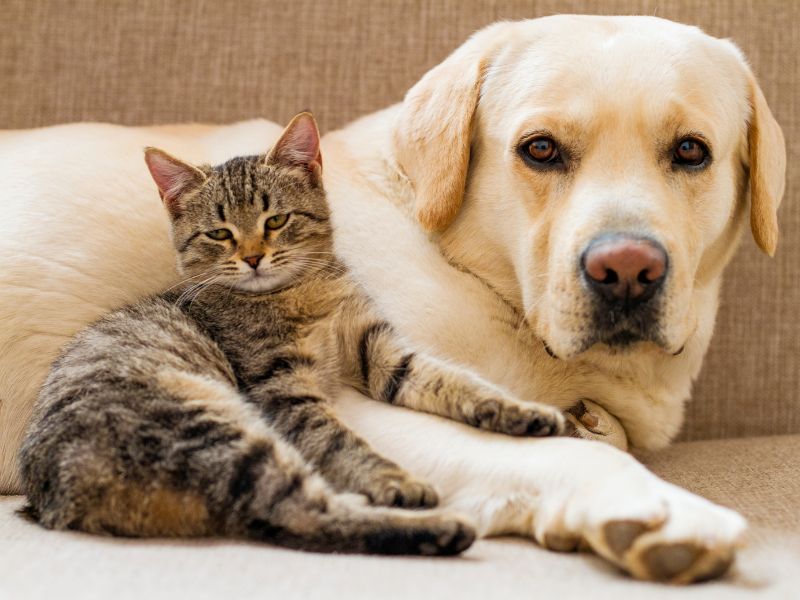
English Labs are known for their friendly and outgoing personalities, making them a great choice for families with children or other pets. They are also highly trainable and eager to please, making them popular with first-time dog owners.
However, it is important to consider the specific needs and lifestyle of your household before bringing an English Lab into your home. These dogs are known for their high energy levels and require plenty of exercise and mental stimulation to stay happy and healthy.
If you live in a small apartment or do not have access to a yard or nearby park, an English Lab may not be the best fit for you. Additionally, if you have a busy schedule and cannot commit to daily walks and playtime, another breed may be a better choice.
It is also important to consider the grooming needs of an English Lab. Their thick, double coats require regular brushing to prevent matting and shedding. If you are not prepared to commit to regular grooming sessions or cannot afford professional grooming services, this may not be the right breed for you.
Overall, an English Lab can make a wonderful addition to the right household. With plenty of love, attention, and exercise, these dogs can thrive and become beloved members of the family.
English Lab Breeders
English Labradors are a popular breed, and there are many reputable breeders across the United Kingdom. When looking for a breeder, it is important to find one that is knowledgeable about the breed and prioritizes the health and well-being of their dogs.
One such breeder is Great English Labrador Puppy Home, which is known for producing puppies with good temperaments and submissive behavior. They provide both male and female puppies at affordable rates, and their breeding programs are safe and secure. All of their puppies are vaccinated and healthy.
Another breeder to consider is Sanglier Chocolate Labradors, which is based in rural East Sussex. They are a Kennel Club Assured Breeder and breed from health-tested dogs. They have a passion for well-bred Labrador Retrievers for the field and for the home. They hold an Ofqual level 3 canine welfare and care certification, ensuring that their dogs are well-cared for.
For those looking for a breeder in the Robertsbridge area of East Sussex, there are several options to consider. Champdogs.co.uk lists over 200 Labrador Retriever breeders near TN32, including Debora Scott in Arundel, West Sussex, and Sarah Crampton in Richmond, Surrey. It is important to research each breeder thoroughly and ask questions before making a decision.
The Future of the English Lab
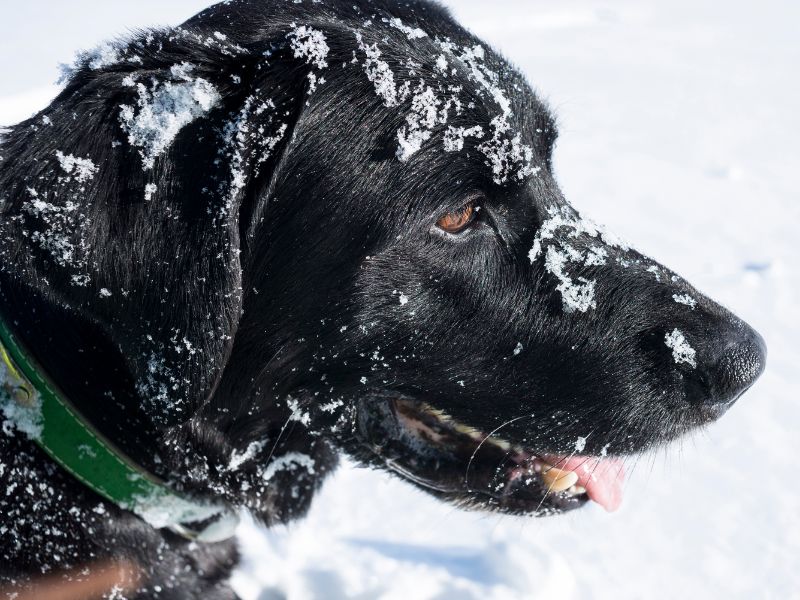
As with any breed, the future of the English Lab is uncertain. However, there are some trends that suggest where the breed may be headed in the coming years.
One trend is the increasing popularity of the breed in the United States. While English Labs are more common in the United Kingdom, they are still sought after by American pet owners. This may lead to more breeders focusing on producing English Labs, which could result in a larger population of the breed in the US.
Another trend is the importance of health testing in breeding programs. As more pet owners become aware of the health issues that can affect Labs, such as hip dysplasia and eye problems, they are more likely to seek out breeders who perform health tests on their dogs. This could lead to a decrease in the incidence of these health problems in the breed.
Finally, the role of the English Lab may continue to evolve. While the breed was originally developed as a hunting dog, it has become increasingly popular as a family pet. As more pet owners seek out dogs that are good with children and other pets, breeders may focus on producing English Labs with a more laid-back, friendly temperament.



